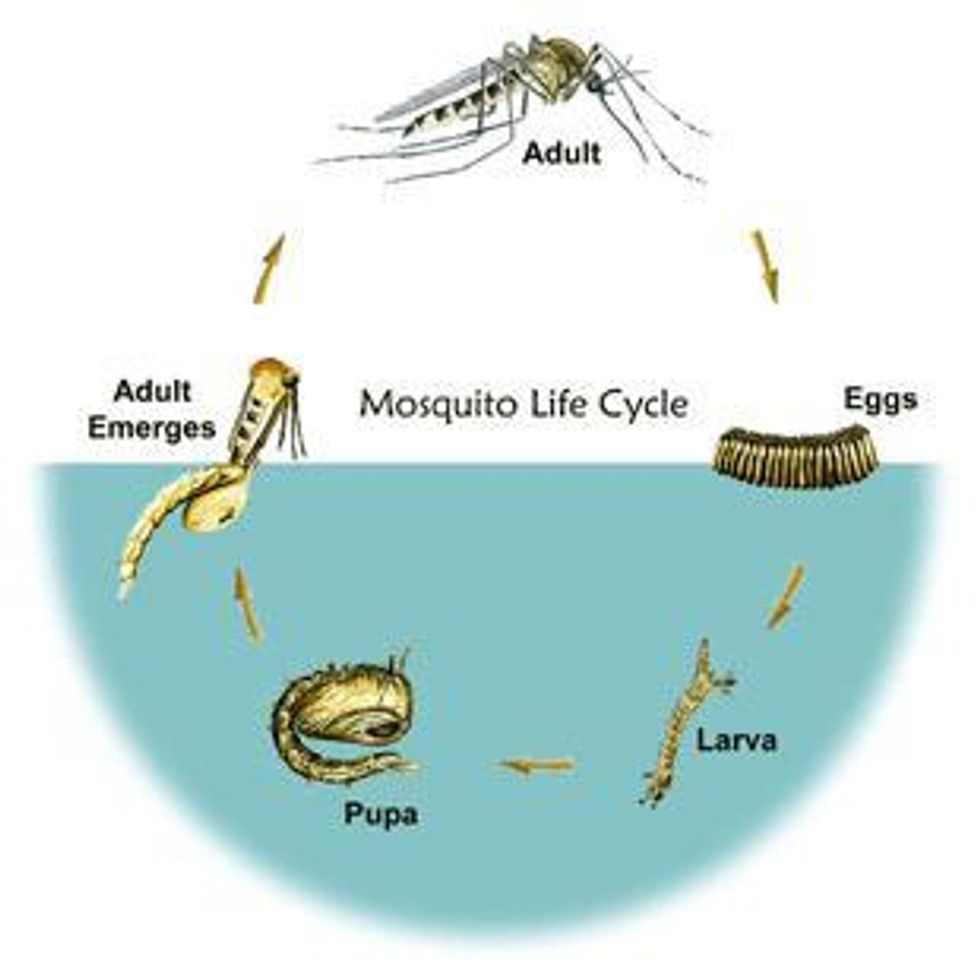With all the rain in south Louisiana, there are some bug problems. Mosquitoes are threatening outdoor fun everywhere. Understanding the mosquitoes' life may be the key to getting rid of them.
Egg
Eggs are laid one at a time or attached together to form "rafts." They float on the surface of the water. In the case of Culex and Culiseta species, the eggs are stuck together in rafts of up to 200. Anopheles, Ochlerotatus and Aedes, as well as many other genera, do not make egg rafts, but lay their eggs singly. Culex, Culiseta, and Anopheles lay their eggs on the water surface while many Aedes and Ochlerotatus lay their eggs on damp soil that will be flooded by water. Most eggs hatch into larvae within 48 hours; others might withstand subzero winters before hatching. Water is a necessary part of their habitat.
Larva
The larva (plural - larvae) lives in the water and comes to the surface to breathe. Larvae shed (molt) their skins four times, growing larger after each molt. Most larvae have siphon tubes for breathing and hang upside down from the water surface. Anopheles larvae do not have a siphon and lie parallel to the water surface to get a supply of oxygen through a breathing opening. Coquillettidia and Mansonia larvae attach to plants to obtain their air supply. The larvae feed on microorganisms and organic matter in the water. During the fourth molt, the larva changes into a pupa.
Pupa
The pupal stage is a resting, non-feeding stage of development, but pupae are mobile, responding to light changes and moving (tumble) with a flip of their tails towards the bottom or protective areas. This is the time the mosquito changes into an adult. This process is similar to the metamorphosis seen in butterflies when the butterfly develops - while in the cocoon stage - from a caterpillar into an adult butterfly. In Culex species in the southern United States this takes about two days in the summer. When development is complete, the pupal skin splits and the adult mosquito (imago) emerges.
Adult
The newly emerged adult rests on the surface of the water for a short time to allow itself to dry and all its body parts to harden. The wings have to spread out and dry properly before it can fly. Blood feeding and mating does not occur for a couple of days after the adults emerge.
To prevent this cycle from completing, empty all things outside that hold water, like buckets and kiddie pools.





















 sunrise
StableDiffusion
sunrise
StableDiffusion
 bonfire friends
StableDiffusion
bonfire friends
StableDiffusion
 sadness
StableDiffusion
sadness
StableDiffusion

 purple skies
StableDiffusion
purple skies
StableDiffusion

 true love
StableDiffusion
true love
StableDiffusion
 My Cheerleader
StableDiffusion
My Cheerleader
StableDiffusion
 womans transformation to happiness and love
StableDiffusion
womans transformation to happiness and love
StableDiffusion
 future life together of adventures
StableDiffusion
future life together of adventures
StableDiffusion





















